Almost Skateboards is known for its highly skilled riders and decks that feature cutting-edge technology. The Double Impact seriese have an entire layer of carbon fiber on top of a deck and carbon disks around the trucks.
Although Carbon fiber sounds like something, what does the Double Impact do from a scientific point of view? This time, we will analyze how the Almost Double Impact reacts compared to other boards when they receive the theoretically same amount of force.
Summary
Entire top sheet made of carbon fiber and disks around the trucks.
Typically, a skateboard comprises seven or eight layers of thin wood plates stacked on each other. But Almost Impact Support has carbon discs embedded around the trucks to improve the pop and the board's durability.
The Double Impact series, in addition to the regular Impact Support carbon discs, has an entire layer of carbon fiber on top of the board to further improve its performance.
Pops higher and closer
In this experiment, the Double Impact gained the highest angle compared to two other boards when I popped the tail with the constant force.
It also popped closer as it flexes less than other boards and pops vertically.
Simulation
Hit the icon to initiate 3d simulation.
Conditions of experiment
The first board: Used Impact Support
The first is a regular Impact Support with the tail worn away after a month of use. Because of the wear and tear, it should be a little lighter. Also, as the carbon disks might affect the weight, I weighed it to be sure, and it weighed 1.3 kilograms.
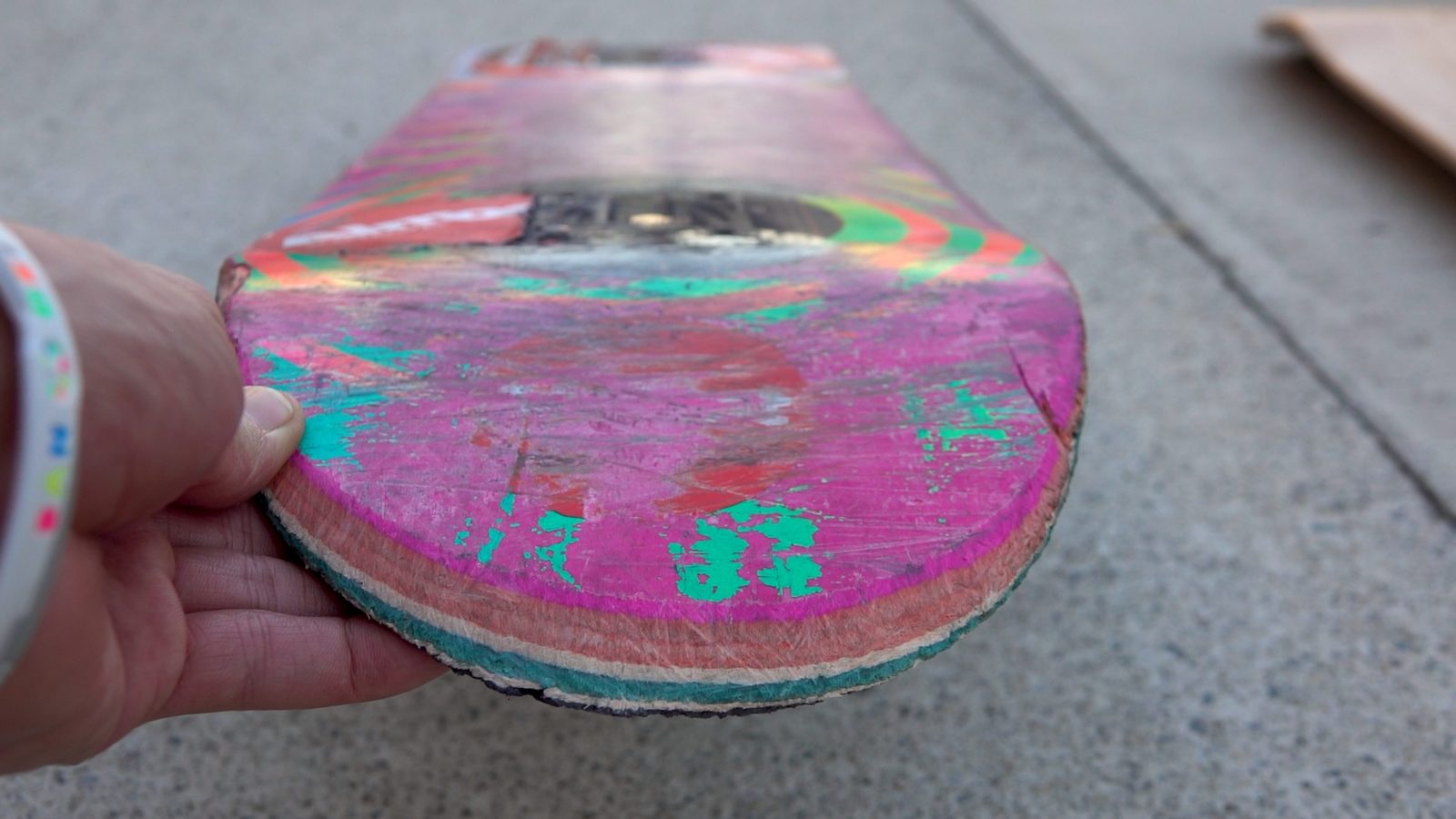
Measurement margin of scale
Please note this. The scale measures weight in increments of 0.05 kilogra3 s, or 50 grams. So, even if it says 1.3 kilograms, it might contain 1.30 or 1.34 kilograms. Please note this measurement margin.
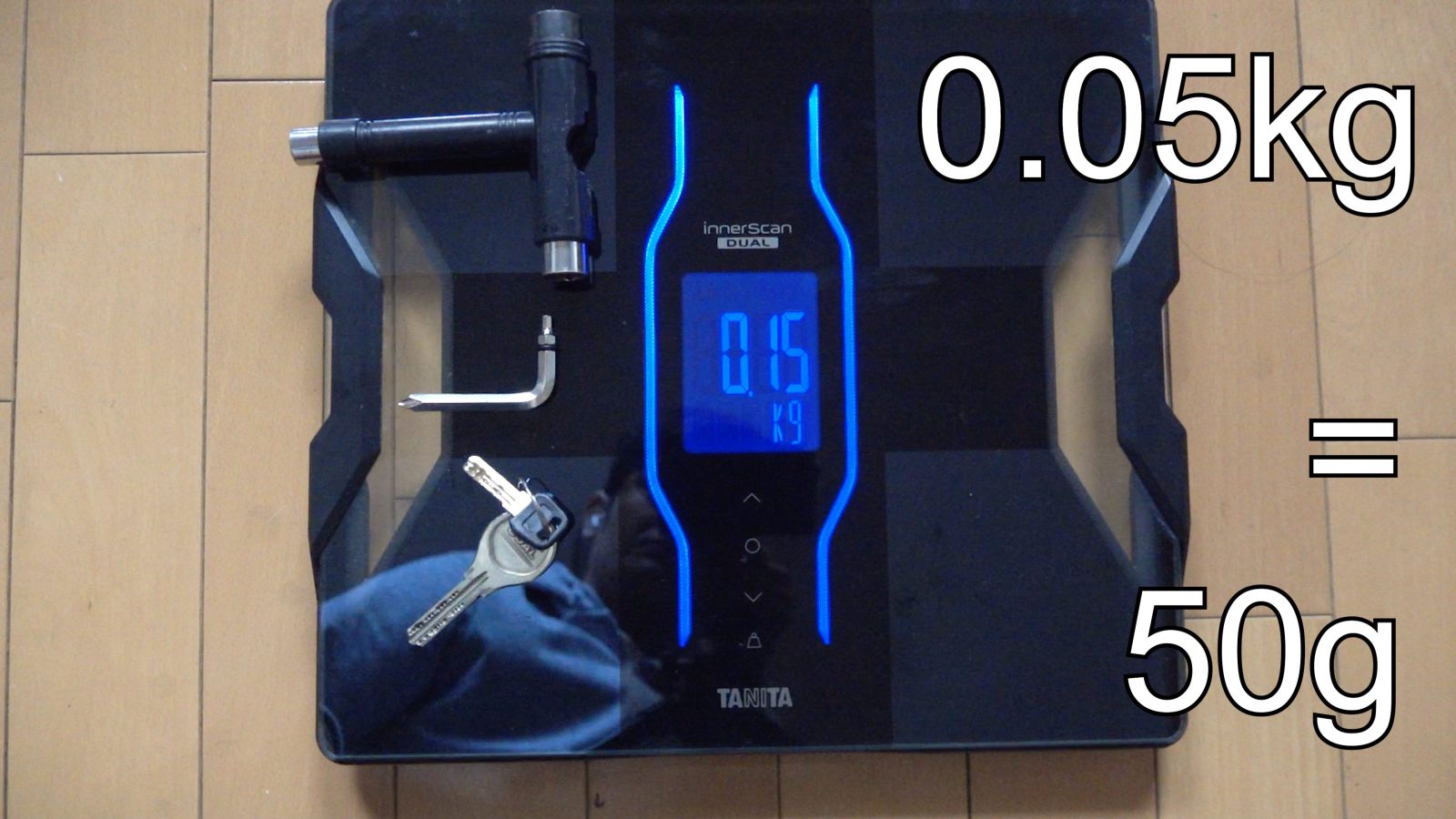
The second board: Brand-new Blank Deck
The second is a brand-new blank deck. It has no particular characteristics and is of a standard shape. It costs about 70 bucks and should be strong enough for some serious skateboarding, unlike the cheap ones at DIY stores. As used in this experiment, with the deck tape on the tail, it weighed 1.3 kilograms; with the rest on top, it weighed 1.4 kilograms.
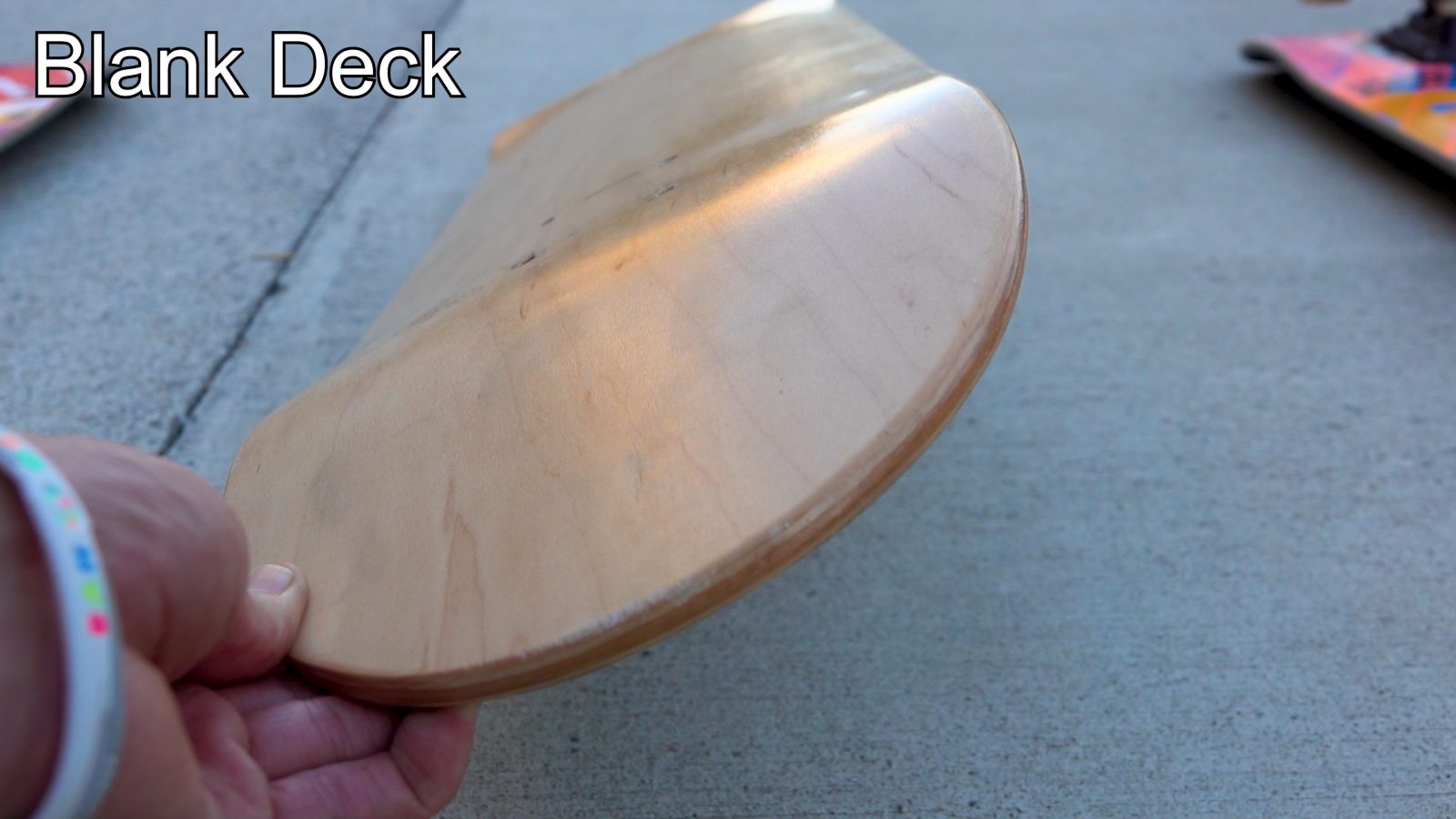
The third board: the Double Impact
The third is what we focus on this time: the Double Impact. It has an entire layer of carbon fiber on top and disks around the trucks. It is said to pop higher and last longer. It weighed 1.4 kilograms.

The difference between blank deck and double impact in weight
Although the figures may contain some measurement margins, the difference between the blank and the Double Impact should be less than 50 grams. Carbon fiber is known to be lighter and stronger and is often used in aircraft, so I thought the Double Impact should be somewhat lighter, but the difference seems minimal.
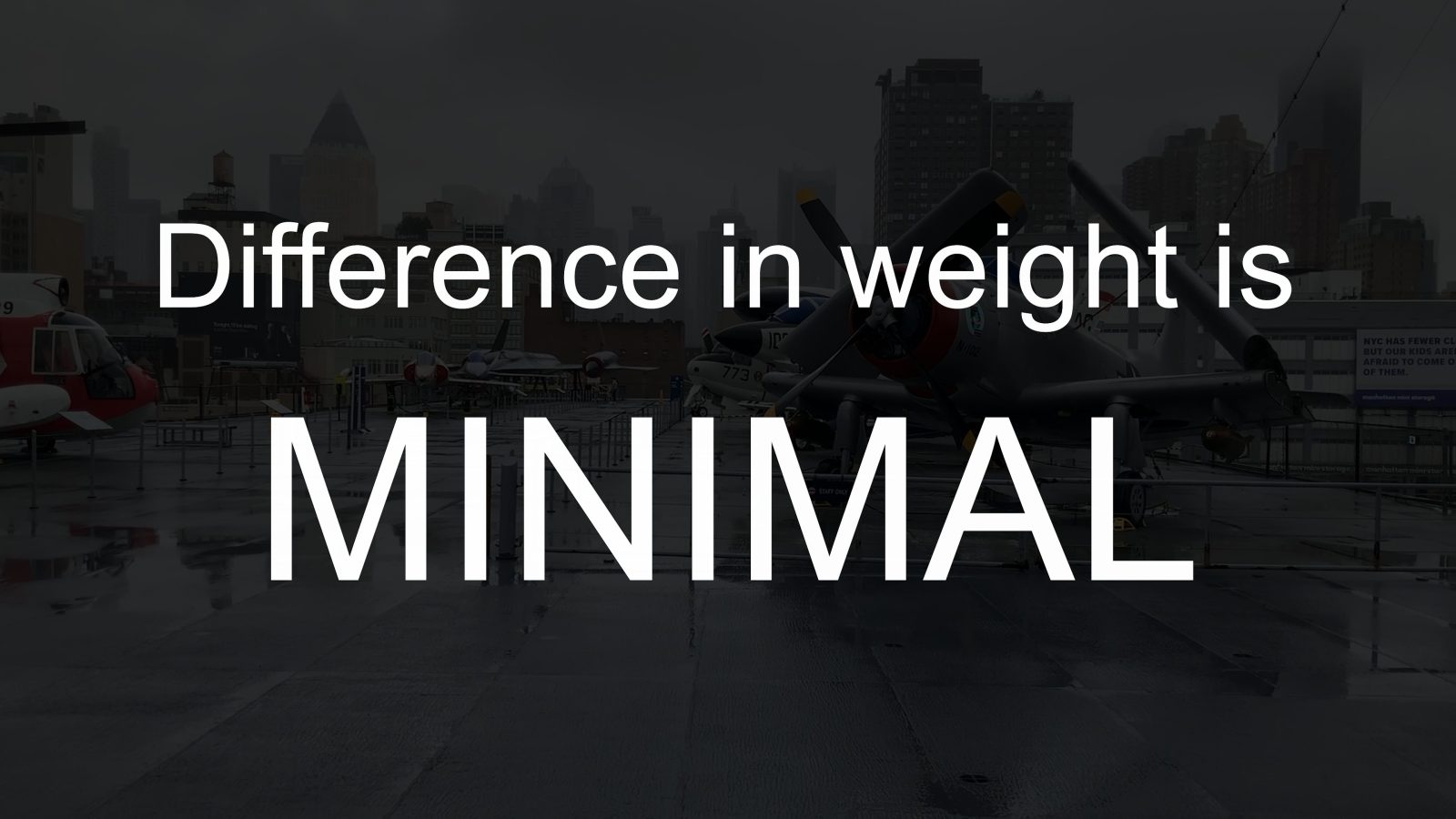
Sizes and other conditions
By the way, all these boards are 8" in size and have approximately the same kicktail angles. The trucks are Tensor Mag Light 5.25s, and the wheels are Bones X-Formula. The trucks are worn out and will not perform as well as they should, but by using the same trucks and wheels on all three boards, we should be able to compare only the boards' performance.

Making the artificial pop generator
Components
Next, we have to find a way to pop the tail with a constant force while eliminating our subjective assumptions. I've assembled steel pipes, metal parts, and chunks of rubber that serve as weights. The stupidest device in human history is now complete: an artificial pop generator.
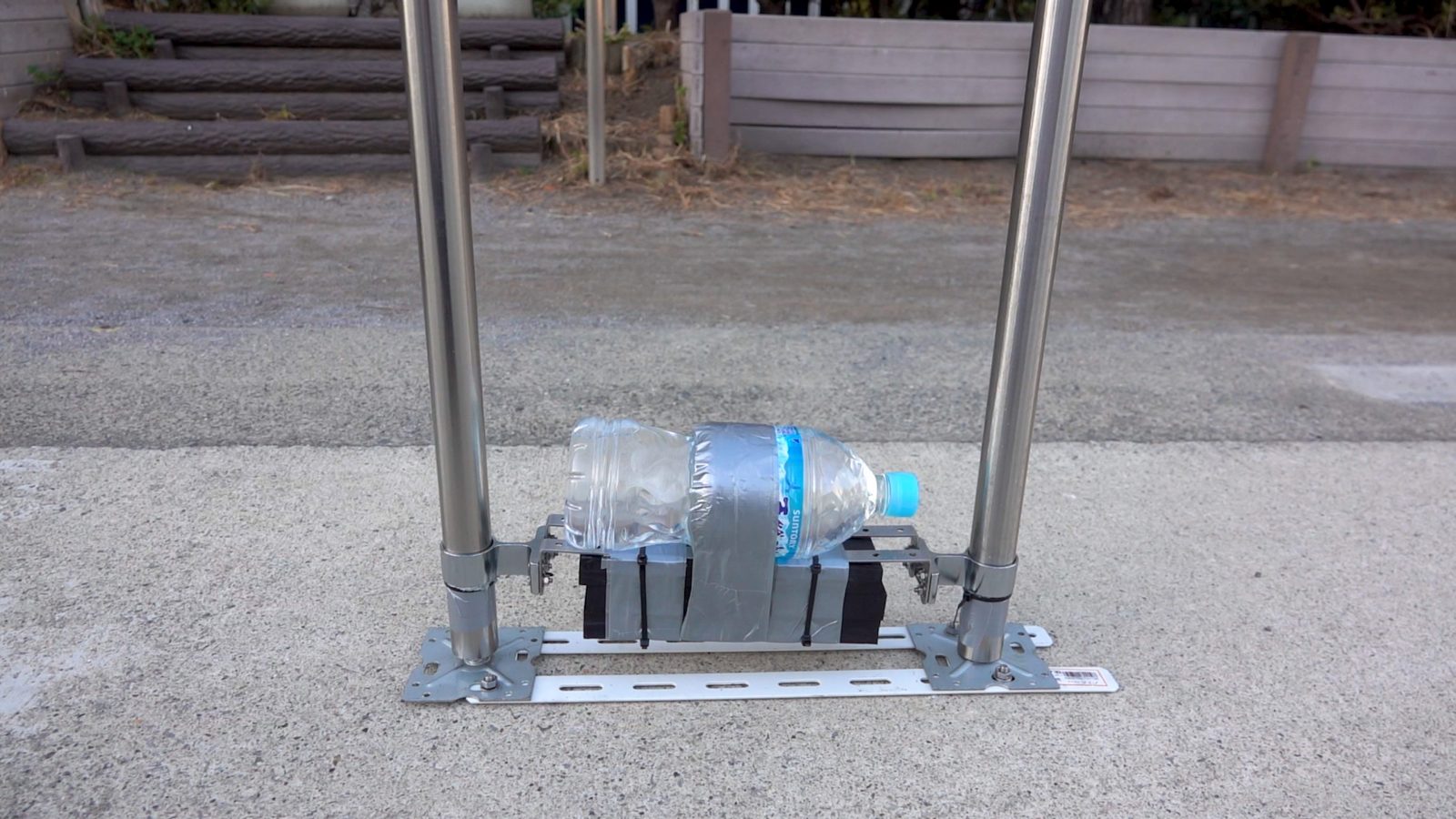
Specification of the weight
Initially, I planned to drop 1.4 kilograms of rubber material, but the weight was not enough to raise the nose, so I added 1 kilogram of water, bringing the total to 2.45 kilograms. This weight is dropped vertically onto the tail from 80 cm high. I will not discuss the detailed physics this time, but intuitively, you should be able to tell this is enough to pop the tail.
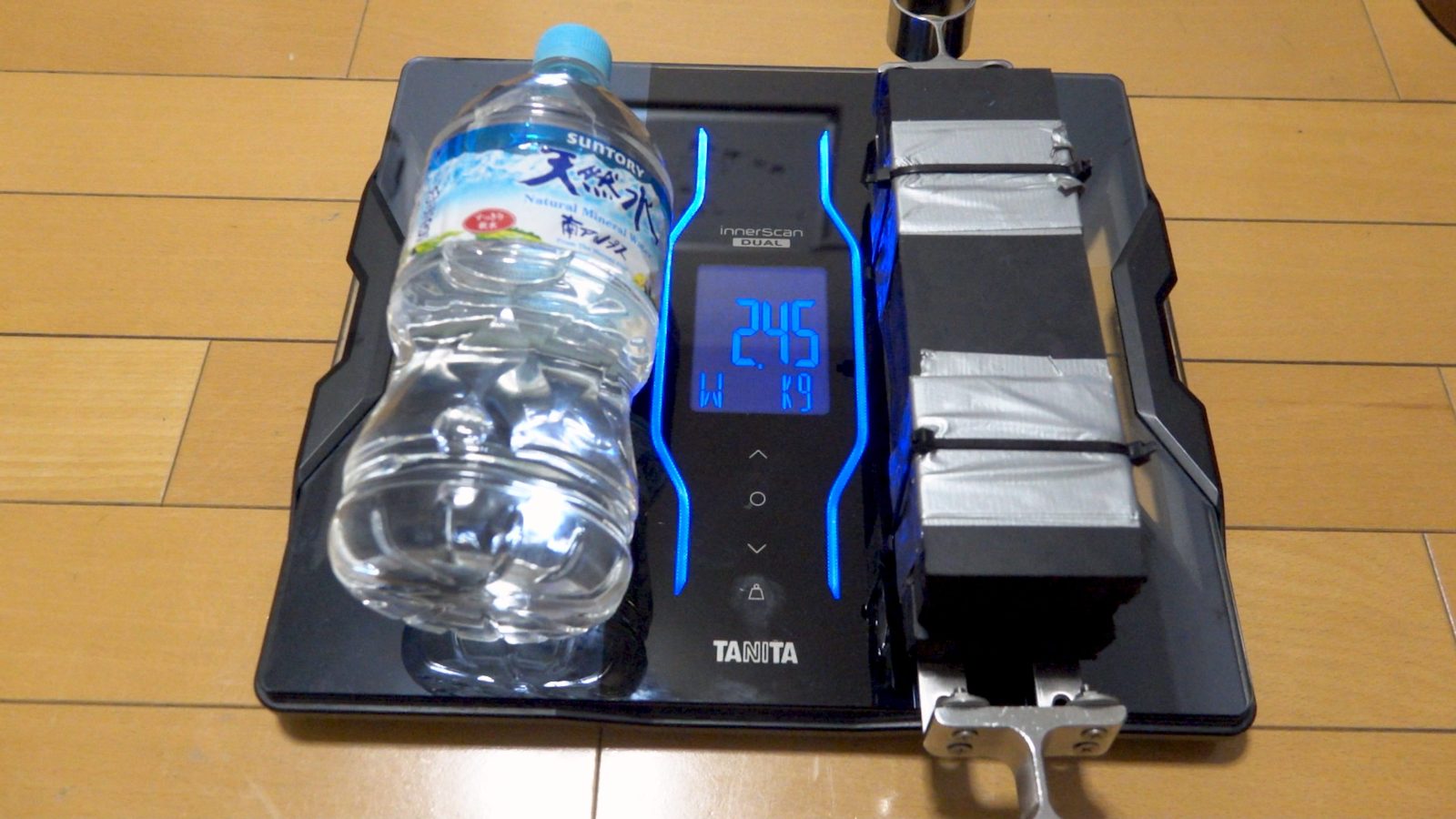
Note on the contraption
The weight stops about 2-3 cm off the ground. This prevents the weight from blocking the board's upward bounce by continuously holding down the tail.
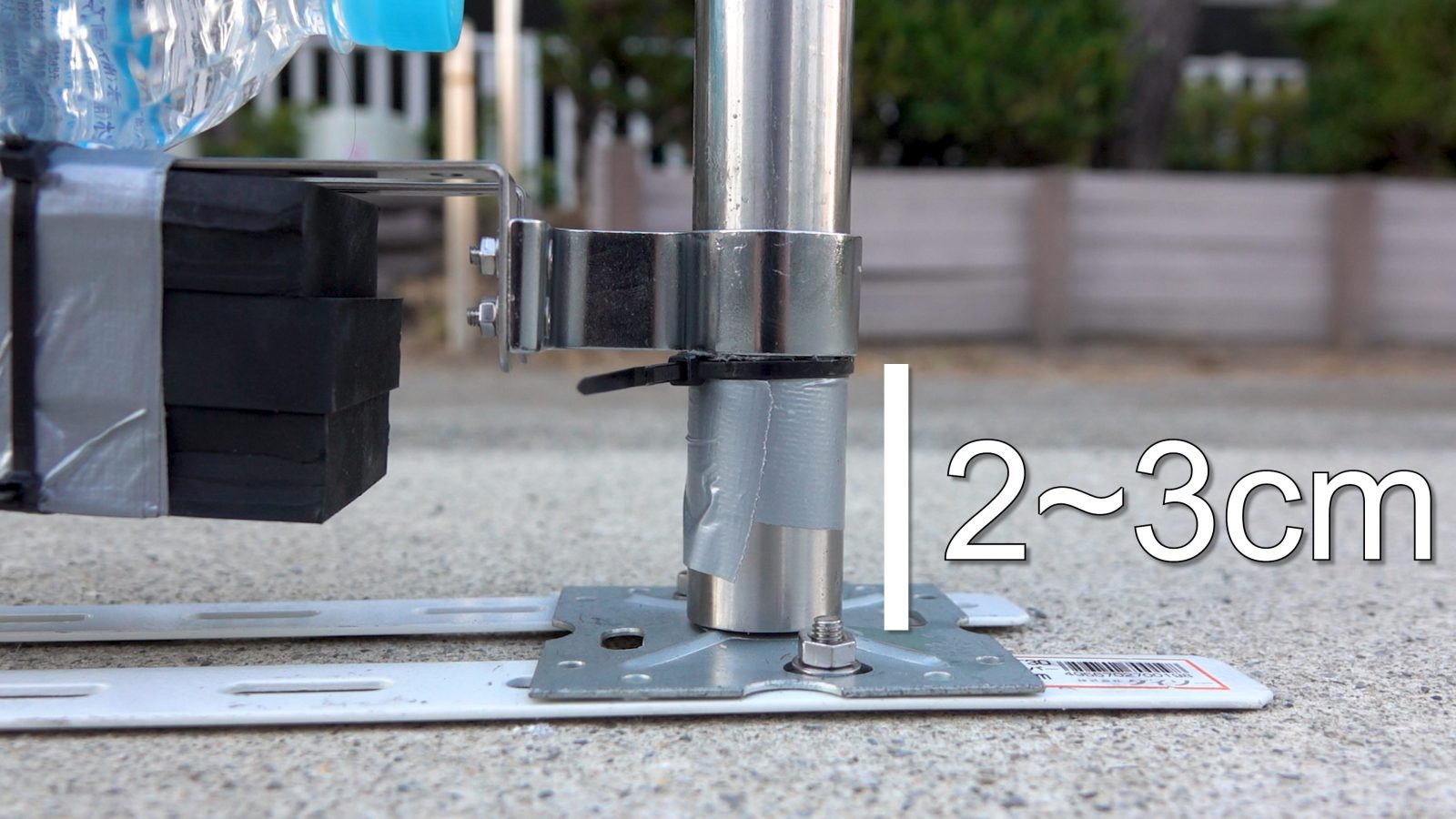
Result of experiment
Let's see what happens. When I drop weights on the tails, they all pop similarly, and there seems to be no difference.
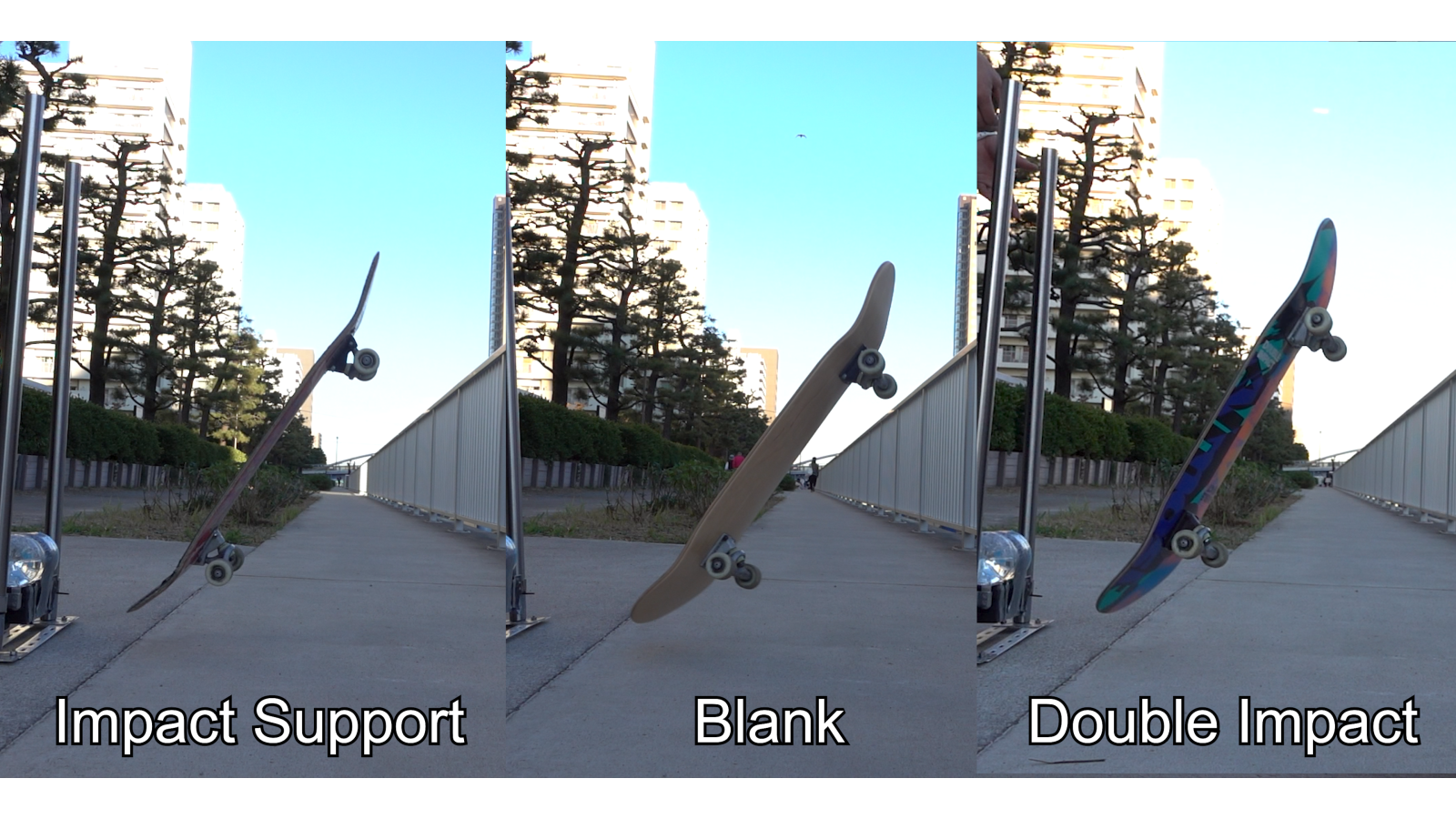
So, let's overlap them and see what's actually taking place. Now you can see that there are slight but certain differences.

Result of the blank deck
The blank deck has the smallest pop angle. I repeated this experiment multiple times; on average, it was about 75 degrees.

Result of the Impact Support
Although the Impact Support is in bad shape, the board rose to 77 degrees.
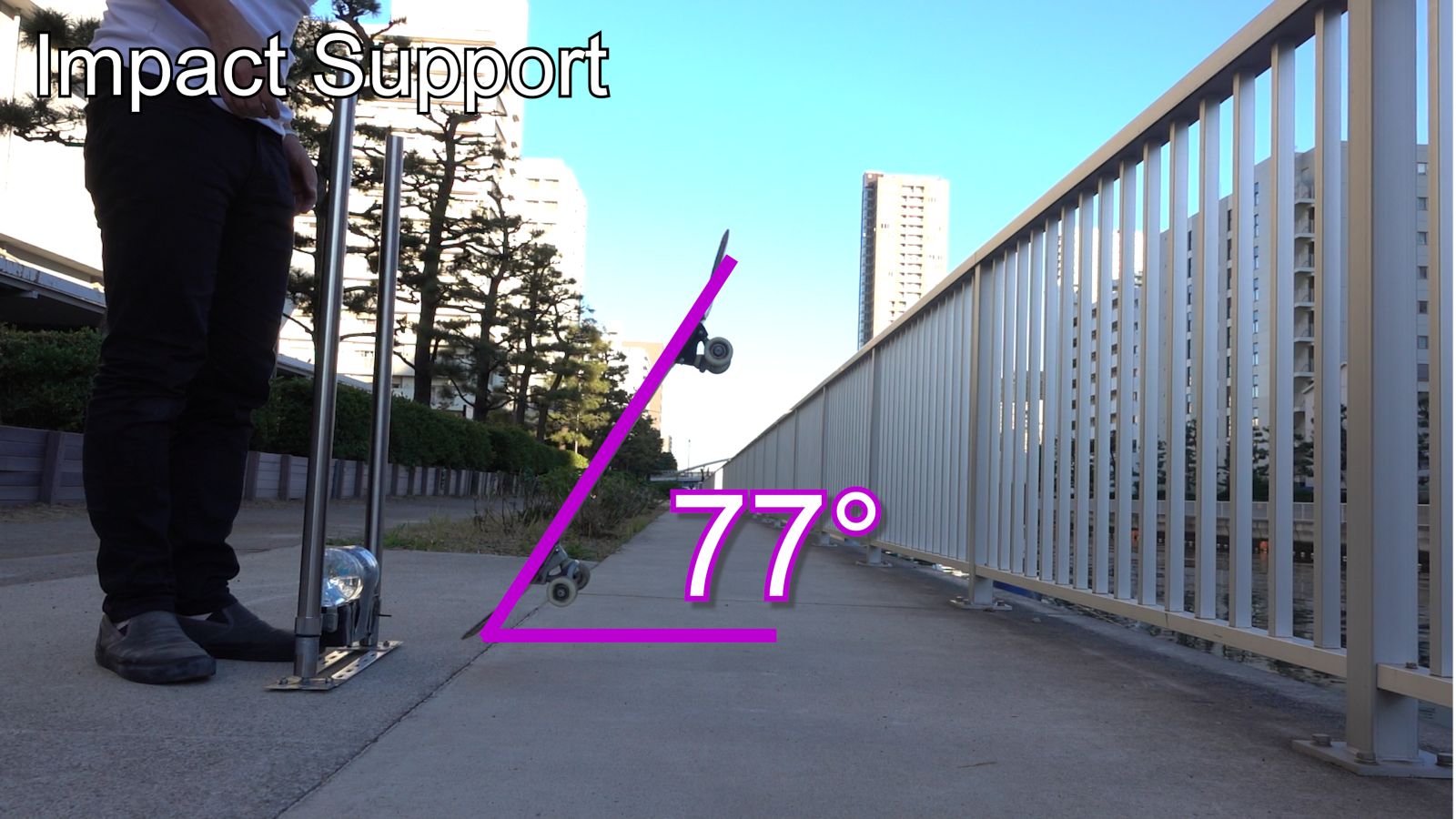
Result of the Double Impact
Finally, the Double Impact. The nose bounced up about 82 degrees. This one popped noticeably higher.
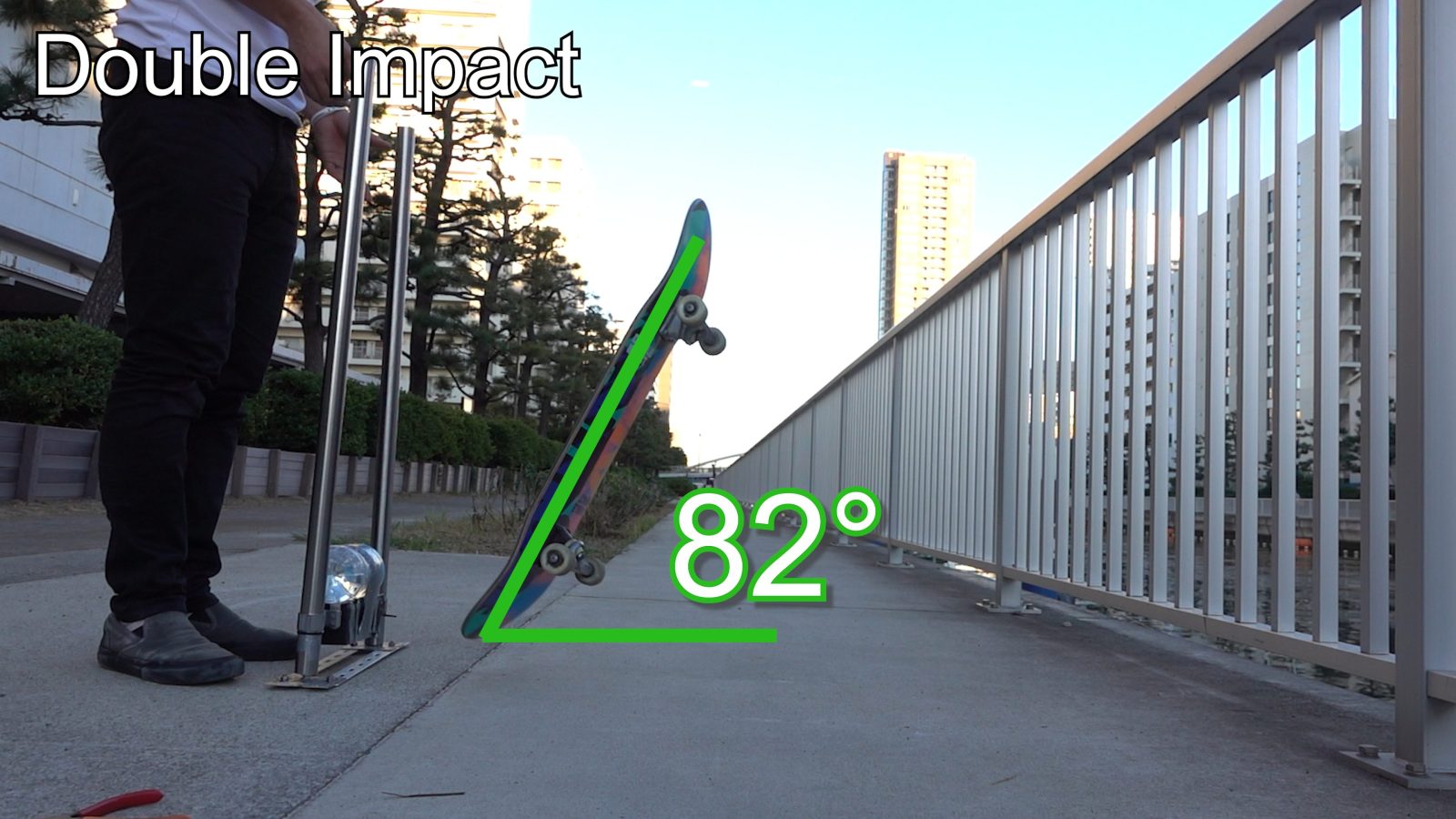
Further Analysis
Double Impact pops closer
If you compare the blank deck with the Double Impact, you can see that the Double Impact pops closer than the blank deck. This should have something to do with the flex of the board. In the case of the blank deck, the board bends at the moment the force reaches the tail. Due to the flex, the board lets the force move forward instead of popping straight up.

On the other hand, in the case of the Double Impact, when the force reaches the tail, the board pops back up without bending like a blank deck. This allows the board to lift more vertically without shifting the board's center of gravity forward.
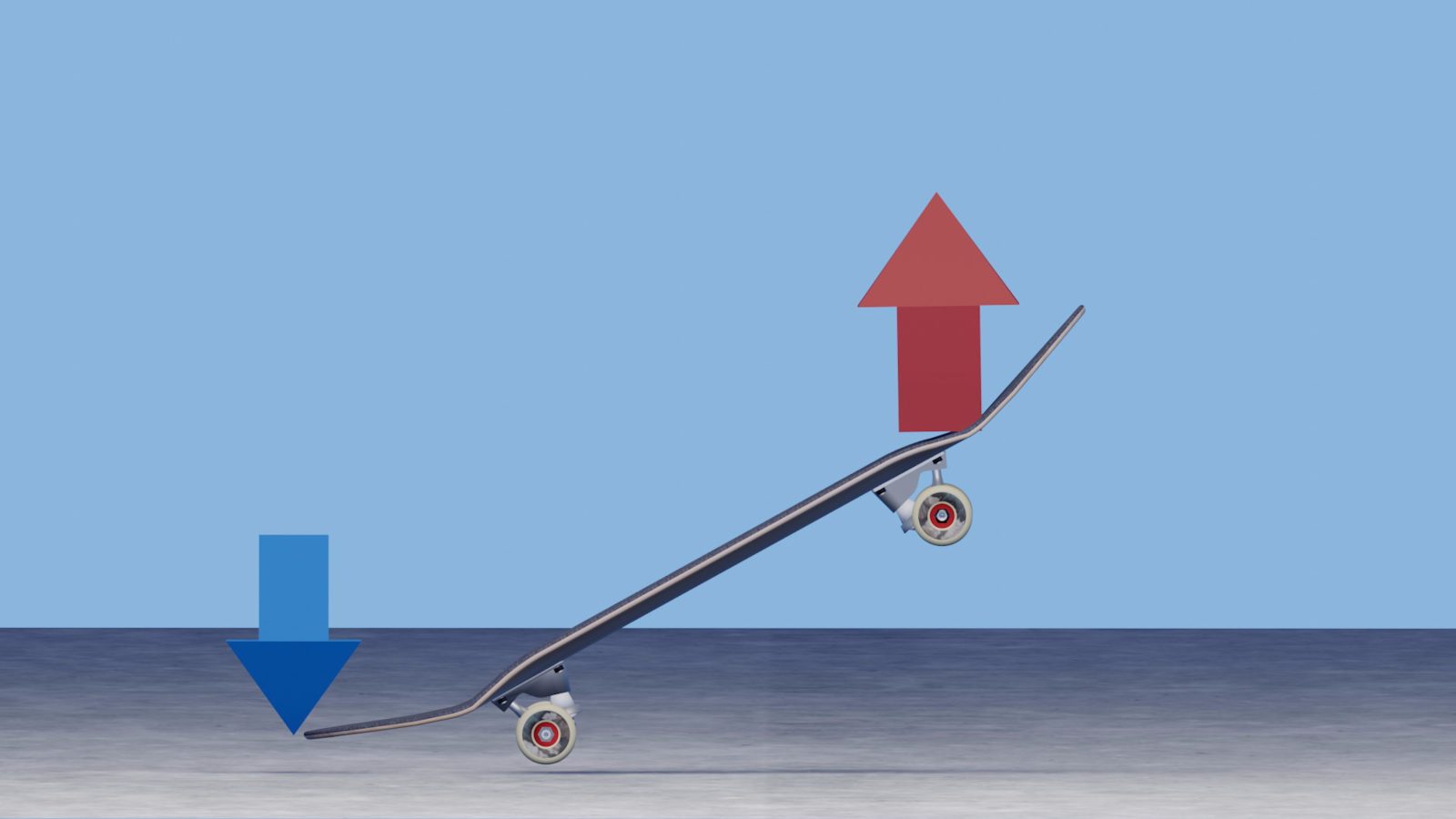
Consideration of the experiment
Reflection of the experiment
I admit. The pop generator used in this experiment was unstable. Sometimes, it could not exert a vertical pop; other times, the weight even stopped in the middle. That's for next time's improvement.

Is it always good to pop higher?
The experiment indicates the Double Impact pops higher. But it does not directly translate it is good. If the nose's rising force is too strong relative to the front foot's position, it can cause a rocket ollie or make it difficult to flick out the front foot in a kickflip.
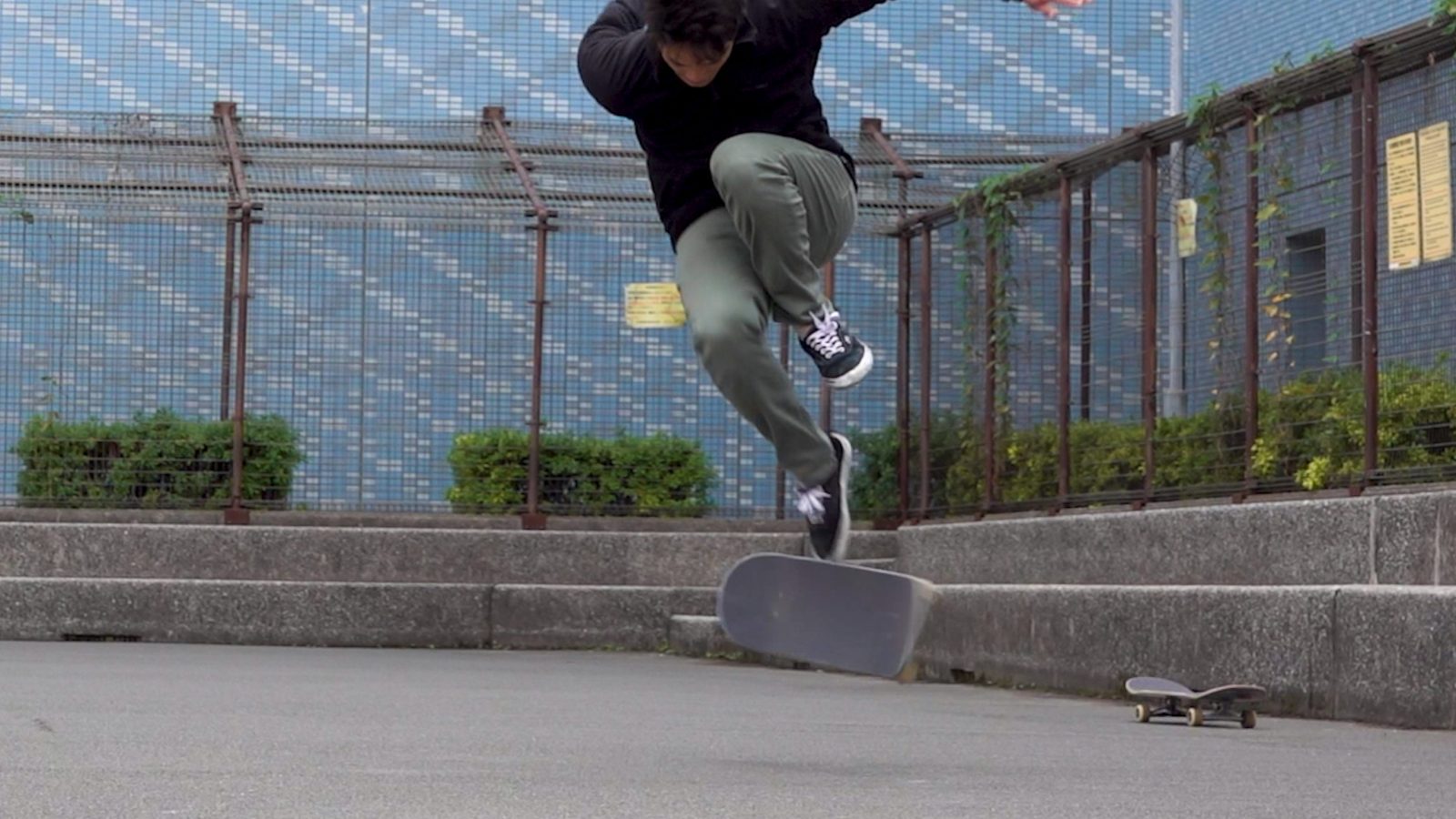
It does have good points, of course. Along with higher pop, this vertical pop seems to help me with late flips. The board is so stiff that I can flip it with only a little touch.



 Convert your video into 3D
Convert your video into 3D Facebook
Facebook Twitter
Twitter

